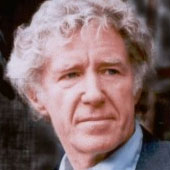Global Food Security: 10 Challenges
World Food Day reminds us of the fragility of food security in the 21st century.
October 15, 2013

October 16 is World Food Day. It offers the opportunity to strengthen national and international solidarity in the fight to end hunger, malnutrition and poverty. Falling water tables, eroding soils and rising temperatures make it difficult to feed growing populations. As a result, control of arable land and water resources is moving to center stage in the global struggle for food security.
Here are some challenges to consider:
1. Rising population
There will be 219,000 people at the dinner table tonight who were not there last night, many of them with empty plates.
2. Rising incomes, changing diets
Today, with incomes rising fast in emerging economies, there are at least 3 billion people moving up the food chain toward Westernized diets. They consume more grain-intensive livestock and poultry products.
Today, the growth in world grain consumption is concentrated in China. It is adding over 8 million people per year, but the big driver is the rising affluence of its nearly 1.4 billion people.
As incomes go up, people tend to eat more meat. China’s meat consumption per person is still only half that of the United States. That leaves a huge potential for future demand growth.
3. Falling water tables
In India some 190 million people are being fed with grain produced by overpumping groundwater. For China, the number is 130 million. Aquifer depletion now threatens harvests in the big three grain producers — China, India and the United States—that together produce half of the world’s grain. The question is not whether water shortages will affect future harvests in these countries, but rather when they will do so.
4. More foodless days
In Nigeria, 27% of families experience foodless days. In India, it is 24%; in Peru, 14%.
The world is in transition from an era dominated by surpluses to one defined by scarcity. Not eating at all on some days is how the world’s poorest are coping with the doubling of world grain prices since 2006. But even as we face new constraints on future production, the world population is growing by 80 million people each year.
5. Slowing irrigation
Water supply is now the principal constraint on efforts to expand world food production. During the last half of the 20th century, the world’s irrigated area expanded from some 250 million acres in 1950 to roughly 700 million in 2000.
This near tripling of world irrigation within 50 years was historically unique. Since then, the growth in irrigation has come to a near standstill, expanding only 10% between 2000 and 2010.
6. Increasing soil erosion
Nearly a third of the world’s cropland is losing topsoil faster than new soil is forming. This reduces the land’s inherent fertility. Future food production is also threatened by soil erosion.
The thin layer of topsoil that covers the earth’s land surface was formed over long stretches of geological time as new soil formation exceeded the natural rate of erosion. Sometime within the last century, the situation was reversed as soil erosion began to exceed new soil formation.
Now, nearly a third of the world’s cropland is now losing topsoil faster than new soil is forming. Soil that was formed on a geological time scale is being lost on a human time scale. Peak soil is now history.
7. Climate change
The generation of farmers now on the land is the first to face manmade climate change.
Agriculture as it exists today developed over 11,000 years of rather remarkable climate stability. It has evolved to maximize production within that climate system. Now, suddenly, the climate is changing. With each passing year, the agricultural system is more and more out of sync with the climate system.
8. Melting water reserves
At no time since agriculture began has the world faced such a predictably massive threat to food production as that posed by the melting mountain glaciers of Asia.
Mountain glaciers are melting in the Andes, the Rocky Mountains, the Alps and elsewhere. But nowhere does melting threaten world food security more than in the glaciers of the Himalayas and on the Tibetan Plateau that feed the major rivers of India and China.
Ice melt helps sustain these rivers during the dry season. In the Indus, Ganges, Yellow and Yangtze river basins, where irrigated agriculture depends heavily on rivers, the loss of glacial-fed, dry-season flow will shrink harvests and could create potentially unmanageable food shortages.
9. Flattening yields
After several decades of raising grain yields, farmers in the more agriculturally advanced countries have recently hit a glass ceiling. That production ceiling is imposed by the limits of photosynthesis itself.
In Japan, the longtime leader in raising cropland productivity, the rise in the yield of rice that began in the 1880s essentially came to a halt in 1996. Having maximized productivity, farmers ran into the inherent limits of photosynthesis and could no longer increase the amount they could harvest from a given plot.
In China, rice yields are now just 4% below Japan’s. Unless China can raise its yields above those in Japan, which seems unlikely, it, too, is facing a plateauing of rice yields.
Yields of wheat, the world’s other food staple, are also plateauing in the more agriculturally advanced countries. For example, France, Germany and the United Kingdom — Europe’s leading wheat producers — had been raising wheat yields for several decades. Roughly a decade ago, all three hit plateaus.
We have already begun to see the consequences of wheat demand outpacing supply.
Corn yields in the United States, which accounts for nearly 40% of the world corn harvest, are starting to level off. Yields in some other corn-growing countries such as Argentina, France and Italy also appear to be stagnating.
10. Little time to prepare
To state the obvious, we are in a situation both difficult and dangerous. The world today desperately needs leadership on the food security issue. Any further progress requires a total restructuring of the energy economy.
The gravity and urgency of the tightening food situation is such that we are not looking at a crisis in 2030 or 2050. We are looking at an abrupt disruption in the world food supply that could be just one poor harvest away.
Takeaways
An abrupt disruption in the world food supply could be just one poor harvest away.
Aquifer depletion now threatens grain harvests in the big 3 producers: China, India, US.
China’s meat consumption is already half that of the US. Meat production is grain-intensive.
Not eating at all some days is how the world’s poor have coped with the doubling of food prices since 2006.
Water supply is now the principal constraint on efforts to expand world food production.
Read previous

American Anger and the Tea Party
October 15, 2013
